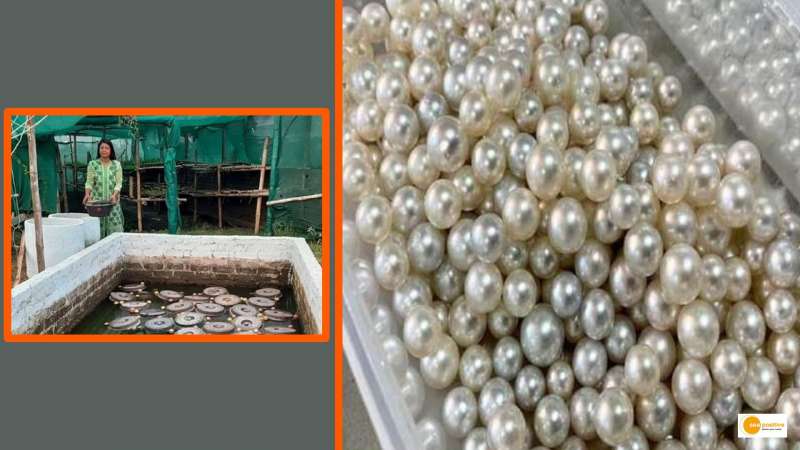

Dr Nina from Odisha’s Balasore district was well aware of this when she left her high-paying corporate job in India to become a pearl farmer. Nina, who holds a Ph.D. in Zoology, previously worked as an Odisha Administrative Officer for 12 years.
Despite knowing the disadvantages, such as a lack of information and successful case studies, she was not afraid to take the risk of pearl farming despite having worked in two very different professions.
She accepted the challenge, however, and began growing pearls in a concrete tank in her garden. For the first two years, she barely made any money, but things began to improve in the third year.
Income from Pearl farming
Her current annual revenue from pearl farming ranges between Rs 10 and Rs 12 lakhs from six of her ponds. She also makes money by rearing fish beneath the pearl. Nina knew that the two could coexist because she had studied the marine ecosystem in depth during her post-graduate studies.
Today, her annual earnings from pearl farming are around Rs 20 lakh, which she could not have predicted when she first began earning money from pearl farming.
The Pearl-Fish Farming Model Has Two Advantages
Nina constructed a 10X6 foot concrete tank and purchased surgical instruments, medications, an ammonia metre, a pH metre, a thermometer, antibiotics, a mouth opener, and a pearl nucleus.She also purchased plankton, which is required for aquatic animals to thrive, as well as mussel food.
She explains, “The mussels are kept in freshwater for 24 hours before being transferred to the pond.” Over the next 2-3 weeks, keep an eye on your eating habits, survival rate, aeration, and water level.
After determining their growth pattern, you can proceed to the next step, which is implanting the nucleus into the mussels. Nina keeps the mussels in fruit trays 3 feet deep in the pond. Ropes are tied to the
trays’ ends. To keep them floating, the other end of the rope is tied with poles.
Nina will be able to harvest pearls from those mussels in about a year.In the meantime, she raises carp fish through aquaculture. She removes the trays for two hours each day while caring for the fish.
The mussels naturally purify the fish waste.” As the fish excreta decompose, the plankton absorbs them.The plankton is consumed by the mussels.
“I also apply lime to the pond to encourage productivity and promote a healthier ecosystem,” Nina continues.Nina produces 10,000 pearls in a single cycle, with a mortality rate of 30-40%, and sells them to dealers.


